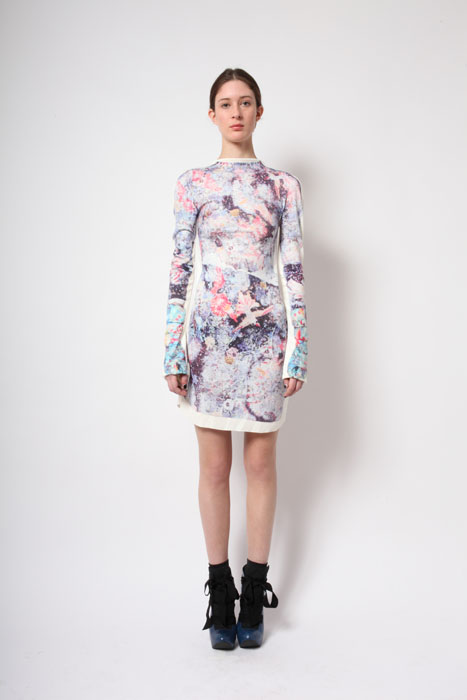Cynthia Rowley Does Warhol

Fast fashion is commonly considered the enemy of artistic creativity and artistry in fashion. But avid art collector Cynthia Rowley has made high-concept art and beat the copycats with her own a limited edition series of photographic reproductions of fifteen looks in her Fall 2010 collection. Rowley’s concept borrows from post-modern appropriation strategies and the tradition of galleries selling editions of photographs or lithographs of great artists’ work. The collection itself, the replicas, a “Cynthia Rowley for Gagosian” label, and small sewing kit housed in a Lucite box are all currrently assembled as an salable installation at Madison Avenue’s Gagosian Shop alongside the limited edition Jeff Koons Puppy Vase, Tom Sachs’ Chess Set and the Damien Hirst Superstition Plates. Here we discuss with Rowley the eternally nagging question, “But is it art?”
ANA FINEL HONIGMAN: You say that this project isn’t art. But it’s concept and aesthetic and serving as commentary. How do you define art?
CYNTHIA ROWLEY: I like the way Jerry Saltz defined it: Art is “the ability to imbed thought in material.”
HONIGMAN: Why work in an edition of 100, rather than much less or more?
ROWLEY: “Limited edition” is totally subjective… 100 seemed like a nice, round number.
HONIGMAN: How do the shapes of these garments differ from your regular cut and style?
ROWLEY: They fit much closer to the body, since they are photographed as 3-D samples and printed in 2-D on the garment.
HONIGMAN: How does your interest in art and your own art collection usually influence your design aesthetic and design concept?
ROWLEY: I try to look at design from a more conceptual standpoint. I also try to consider the craft of fashion design—the tailoring, the handwork, the special, one-of-a-kind elements. Art has definitely influenced how I think of design, both as individual items and as a body of work.
HONIGMAN: How do you think that the relationship between art and fashion will shift now that the economy has changed?
ROWLEY: Possibly, mediocrity will be weeded out, and what’s left will be the elevated craft, combined with a more accessible, Warhol-ian approach to fashion.
HONIGMAN: Why did you decide to work with Gagosian rather than another gallery, exhibition space or independent of an official art context?
ROWLEY: Besides the fact that Gagosian is the most influential gallery in the world, the decision came about sort of organically. While at the Gagosian Shop signing coloring books for RxArt, I was talking to Andy Avini about this concept. We both got really excited about the idea.
HONIGMAN: Do you foresee most of the collectors of the project wearing or hanging the fabric? Which would you prefer happen?
ROWLEY: It doesn’t matter to me. Beauty (and function) are in the eye of the beholder.






